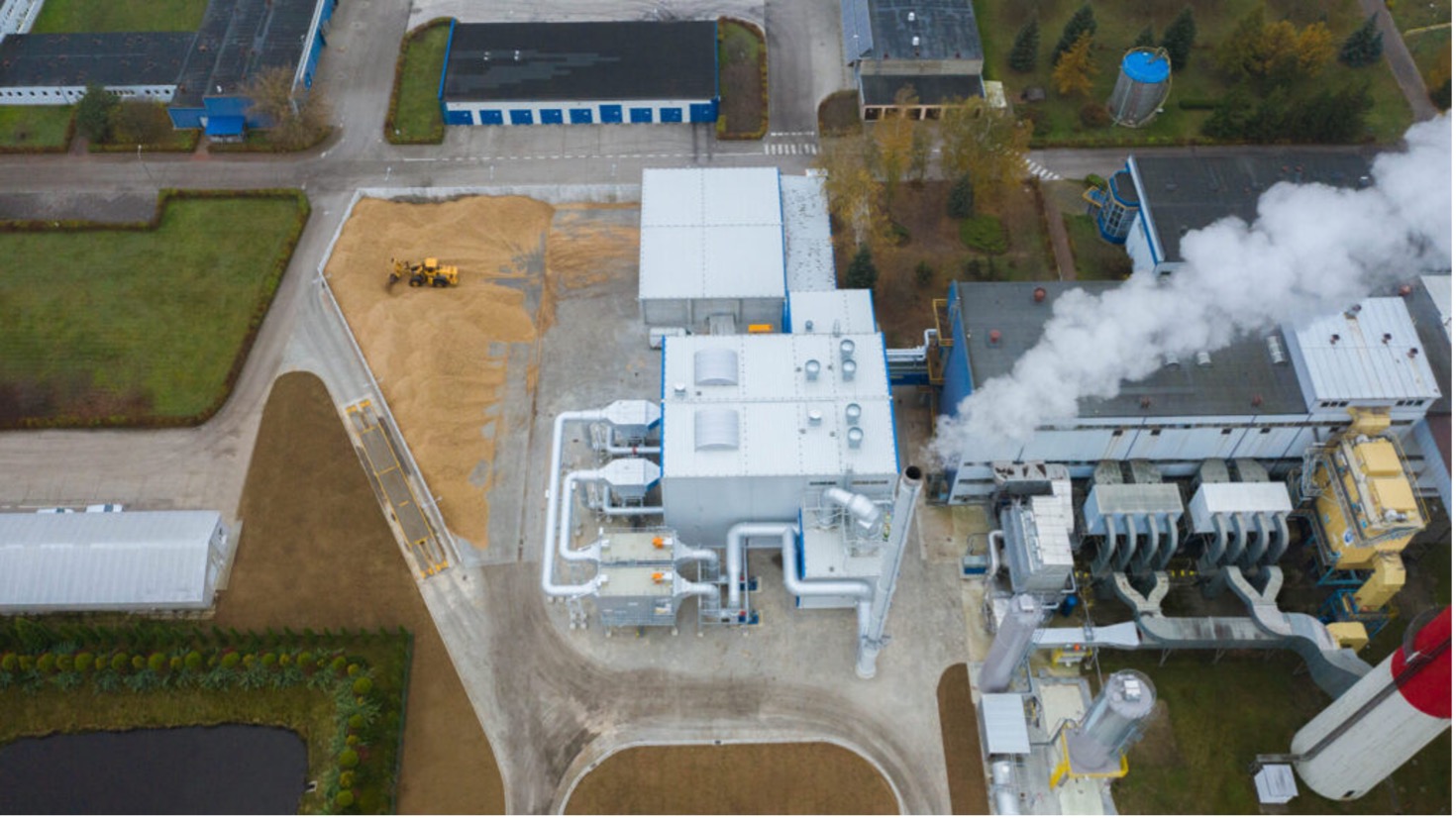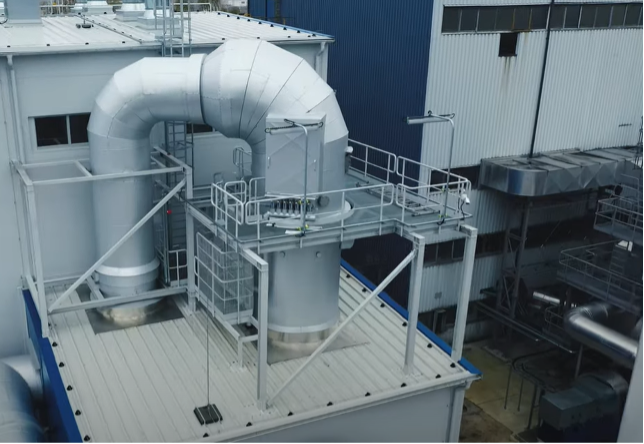Find more about technologies that make biofuel boilers more efficient, namely the use of waste heat after power plants.
In conventional boilers, a large amount of energy is lost to the environment through the heat released with the flue gases. Usually, the temperature of the flue gases after the boilers is kept at the level of 140-220 C, which leads to a loss of 8-15% of fuel energy. Combustion products containing water vapor are formed as a result of fuel combustion. By adding a flue gas recycler to a conventional boiler, it is possible to recover a significant part of the apparent and latent heat energy and significantly increase the thermal efficiency of the installation.
Usually, the use of condensation utilisers (economizers) on gas boilers allows to additionally obtain up to 12% of thermal energy, and on biofuel boilers — up to 35%, depending on the humidity of the biofuel and the temperature of the water used for cooling.
The biofuel boiler plant in Suwałki (Poland) began operating in December 2020. Before that, coal was used as fuel. Commissioning of the biomass burning plant will allow obtaining about 20% of renewable energy in annual heat production.

Two biofuel boilers (2 x 12.5 MW) for water heating with a total capacity of 25 MW and a flue gas condensation economizer with a capacity of 5.0 MW were installed. On the territory of the boiler house, a fuel warehouse of wood chips with a volume of 4,000 m3 has been arranged, which provides a fuel supply for 4 days.
The technological partner and equipment supplier was the Axis Tech company, which manufactured a 15 MW pre-furnace with a reciprocated grate for burning wood chips, as well as a fuel supply and ash removal system, implemented a gas cleaning system and automation systems for controlling the boiler house. The furnace allows you to burn wood chips with a moisture content of 30-60% and has an adjustment range of 30-100%. Usually, the temperature of flue gases at the exit from the furnace does not exceed 1000 C, and CO emissions <200 mg/Nm3.
The water heating unit is made in the form of a vertical chimney heat exchanger with a capacity of 12.5 MW manufactured by Danstoker, which provides disposal of flue gases and heating of water with a pressure of 10 bar and a temperature of up to 120 C.
The system of gas purification from solid particles is provided in two stages – multicyclones and an electrostatic filter, which ensure the concentration of solid particles in the flue gases no higher than 20 mg/nm3.
In order to increase the efficiency of the fuel energy use, the project provides for the installation of an additional condensation water utilizer (economizer) of a vertical type. The heat capacity of additional heat energy utilization is 4-6 MW and depends on the the return water temperature of the heat network used for deep cooling. It allows to obtain an additional 20% of thermal energy and reduce fuel consumption. The temperature of the flue gases behind the utilizer can drop to 46 °C, and therefore a 40 m high stainless steel insulated flue pipe is used for the removal of flue gases.

In 2023, the company achieved 40% of heat energy production from renewable sources, which brings it closer to an efficient heat supply system. The company does not plan to rest on its laurels and plans to start implementing a biomass cogeneration project in the near future.
In Ukraine, the experience of using condensing economizers on biomass boilers is rather insignificant. The first condensing economizer with a capacity of 1 MW was installed at the biofuel boiler house of the Boryspil airport in 2016, which made it possible to increase the efficiency of fuel use by 15-20%. A similar project of installing a condensing economizer for a 4 MW biofuel boiler was implemented on the basis of a heating boiler house in the city of Ivano-Frankivsk.
Beneficial use of waste heat after power plants allows to increase the economic efficiency of heat generating plants, reduce fuel consumption and emissions of pollutants into the atmosphere. For biomass plants, deep flue gas recovery systems can be used in particular as gas cleaning equipment to reduce emissions of solid particles into the atmosphere.